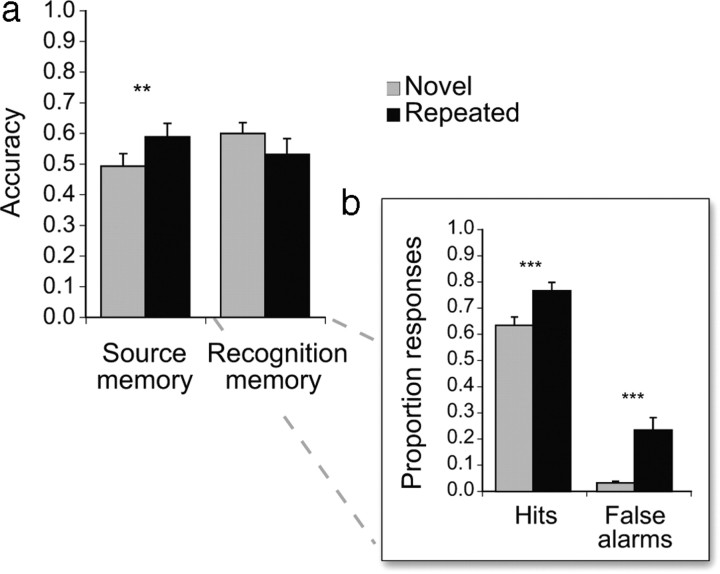Figure 2.
Behavioral measures of memory performance. We observed a trend toward the typical advantage for novel materials in recognition memory accuracy, the measure that has been used to compare memory for novel and familiar materials in all previous novelty studies (a). However, recognition memory is confounded here and in other studies investigating novelty and memory: while we wish to compare memory strength for novel and repeated targets, repeated lures are more difficult to reject than novel ones. Inset (b) is a plot illustrating how a higher false-alarm rate in the repeated relative to novel condition (***p < 0.001) deflated recognition accuracy scores in the repeated condition. Our new approach was to measure source memory accuracy for novel and repeated items, a measure that does not suffer from this confound. We observed the opposite pattern to that observed when using the recognition memory measure: memory was superior for repeated materials (**p < 0.005). Chance recognition memory accuracy was 0.00; chance source memory accuracy was 0.33. Error bars in all plots depict +1 SEM.

